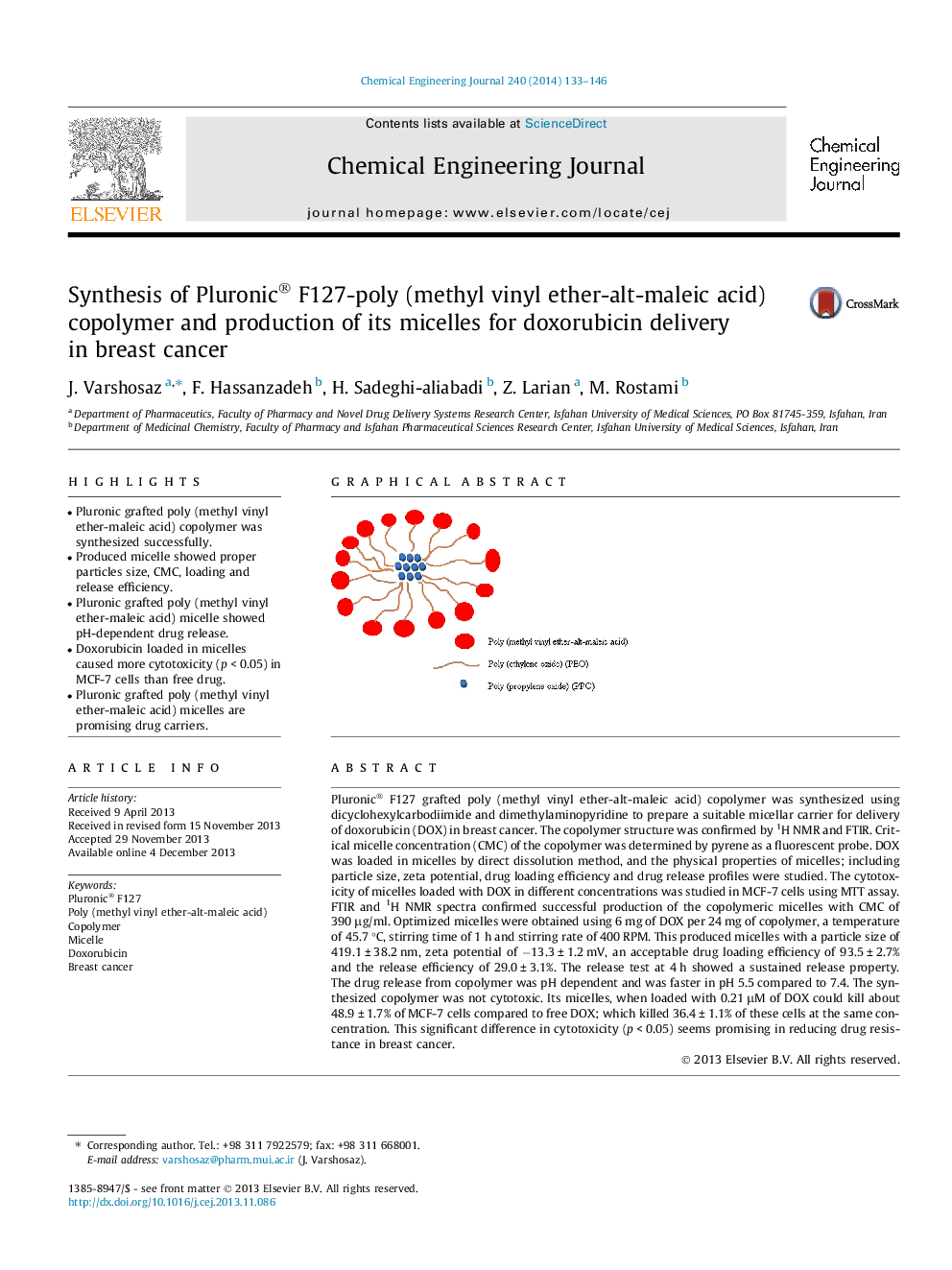| Article ID | Journal | Published Year | Pages | File Type |
|---|---|---|---|---|
| 147725 | Chemical Engineering Journal | 2014 | 14 Pages |
•Pluronic grafted poly (methyl vinyl ether-maleic acid) copolymer was synthesized successfully.•Produced micelle showed proper particles size, CMC, loading and release efficiency.•Pluronic grafted poly (methyl vinyl ether-maleic acid) micelle showed pH-dependent drug release.•Doxorubicin loaded in micelles caused more cytotoxicity (p < 0.05) in MCF-7 cells than free drug.•Pluronic grafted poly (methyl vinyl ether-maleic acid) micelles are promising drug carriers.
Pluronic® F127 grafted poly (methyl vinyl ether-alt-maleic acid) copolymer was synthesized using dicyclohexylcarbodiimide and dimethylaminopyridine to prepare a suitable micellar carrier for delivery of doxorubicin (DOX) in breast cancer. The copolymer structure was confirmed by 1H NMR and FTIR. Critical micelle concentration (CMC) of the copolymer was determined by pyrene as a fluorescent probe. DOX was loaded in micelles by direct dissolution method, and the physical properties of micelles; including particle size, zeta potential, drug loading efficiency and drug release profiles were studied. The cytotoxicity of micelles loaded with DOX in different concentrations was studied in MCF-7 cells using MTT assay. FTIR and 1H NMR spectra confirmed successful production of the copolymeric micelles with CMC of 390 μg/ml. Optimized micelles were obtained using 6 mg of DOX per 24 mg of copolymer, a temperature of 45.7 °C, stirring time of 1 h and stirring rate of 400 RPM. This produced micelles with a particle size of 419.1 ± 38.2 nm, zeta potential of −13.3 ± 1.2 mV, an acceptable drug loading efficiency of 93.5 ± 2.7% and the release efficiency of 29.0 ± 3.1%. The release test at 4 h showed a sustained release property. The drug release from copolymer was pH dependent and was faster in pH 5.5 compared to 7.4. The synthesized copolymer was not cytotoxic. Its micelles, when loaded with 0.21 μM of DOX could kill about 48.9 ± 1.7% of MCF-7 cells compared to free DOX; which killed 36.4 ± 1.1% of these cells at the same concentration. This significant difference in cytotoxicity (p < 0.05) seems promising in reducing drug resistance in breast cancer.
Graphical abstractFigure optionsDownload full-size imageDownload as PowerPoint slide
